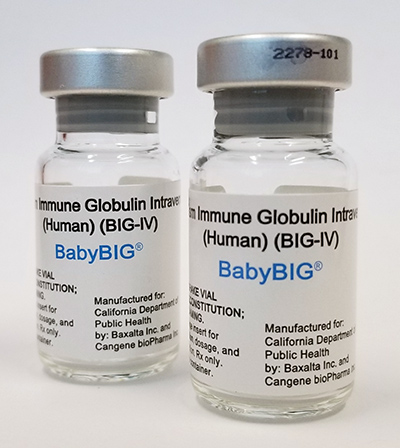Today, I review, link to, and excerpt from the New York Times article, Infant Formula Recall Expands as Botulism Outbreak Grows, Nov 11, 2025.
In addition I link to and excerpt from the CDC‘s Clinical Overview of Infant Botulism. Health Care Providers
April 24, 2024
Also, review the CDC‘s Clinician Resources For Botulism.
All that follows below is from the New York Times article:
Infant Formula Recall Expands as Botulism Outbreak Grows:
Federal health officials said caregivers should stop using all ByHeart powdered formula products after 15 infants in 12 states were hospitalized.The F.D.A. said on Saturday that 13 infants had been hospitalized in 10 states.
No deaths have been reported. The F.D.A. said the 15 cases of botulism had been found in infants in Arizona, California, Illinois, Kentucky, Minnesota, North Carolina, New Jersey, Oregon, Pennsylvania, Rhode Island, Texas and Washington.
Parents and caregivers should immediately stop using the recalled formula, the C.D.C. said. Anyone who has fed the formula to an infant should keep the container for 30 days and monitor the child for signs of botulism, the agency said. If a child develops symptoms, state health regulators may want to collect the formula for testing.
It can take several weeks for symptoms of infant botulism to appear. Symptoms of botulism, which can be fatal, include poor feeding, loss of head control, difficulty swallowing and decreased facial expression.
All that follows below is from the CDC‘s Clinical Overview of Infant Botulism. Health Care Providers
April 24, 2024
Key points
- Initial diagnosis of infant botulism is based on clinical symptoms.
- Consultation is available for suspected cases.
- If clinical consultation supports infant botulism, begin treatment as soon as possible. Do not wait for laboratory confirmation.
- Infant botulism is a notifiable disease. All suspected cases must be reported to the state public health department.
Overview
Infant botulism is an intestinal toxemia.
The disease results after spores of the bacterium Clostridium botulinum or related species are swallowed. These spores temporarily colonize an infant’s large intestine and produce botulinum neurotoxin.
The neurotoxin binds to cholinergic nerve terminals and cleaves intracellular proteins necessary for acetylcholine release. This can result in:
- Bulbar palsies
- Hypotonia
- A symmetric, descending, flaccid paralysis
Signs and symptoms
Patient recovering from infant botulism still has neck muscle weakness.
Patients with infant botulism may present with some or all the following signs and symptoms:
- Constipation
- Poor feeding
- Ptosis (drooping eyelid)
- Sluggish pupils
- Flattened facial expression
- Diminished suck and gag reflexes
- Weak and altered cry
- Respiratory difficulty and possibly respiratory arrest
Steps to take
Step 1: Call
Case consultation
If you suspect your infant patient has botulism, immediately call 510-231-7600 for case consultation. Consultation is available 24/7.
- You will reach the on-call physician at the Infant Botulism Treatment and Prevention Program (IBTPP) at the California Department of Public Health.
- The physician will provide a no-cost clinical consultation and release BabyBIG treatment if the patient’s clinical findings indicate infant botulism.
Case reporting
After consulting with the IBTPP, call your state health department to:
- Receive guidance on specimen collection, storage, and submission (also refer to the IBTPP collection guidance)
- Ask questions about testing methods
- Learn about mandatory reporting
Step 2: Treat
If clinical consultation supports infant botulism, begin treatment with BabyBIG as soon as it is available.
Keep in mind, initial diagnosis is based on clinical symptoms. Do not wait for laboratory confirmation to begin treatment.
BabyBIG®, human antitoxin for the treatment of infant botulism.
Step 3: Test
A stool or enema specimen is required for definitive diagnosis of infant botulism. Enemas should be performed with sterile, non-bacteriostatic water.
Diagnostic testing is done through your state public health department laboratory. CDC provides testing services for some state public health departments.
This specialized testing often takes days to complete. Follow up with your state health department if you do not receive results within five days.
Step 4: Notify
Infant botulism is a notifiable disease in the United States.
Physicians must promptly notify the state health department of suspected cases. As a courtesy, IBTPP notifies the state health department after BabyBIG infusion is completed. Laboratories must notify the state health department of all confirmed cases.
State health departments report confirmed cases to CDC through the National Notifiable Diseases Surveillance System.
Resources
Infant Botulism Treatment and Prevention Program






